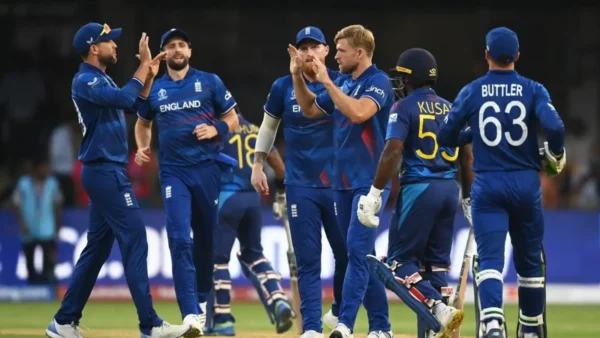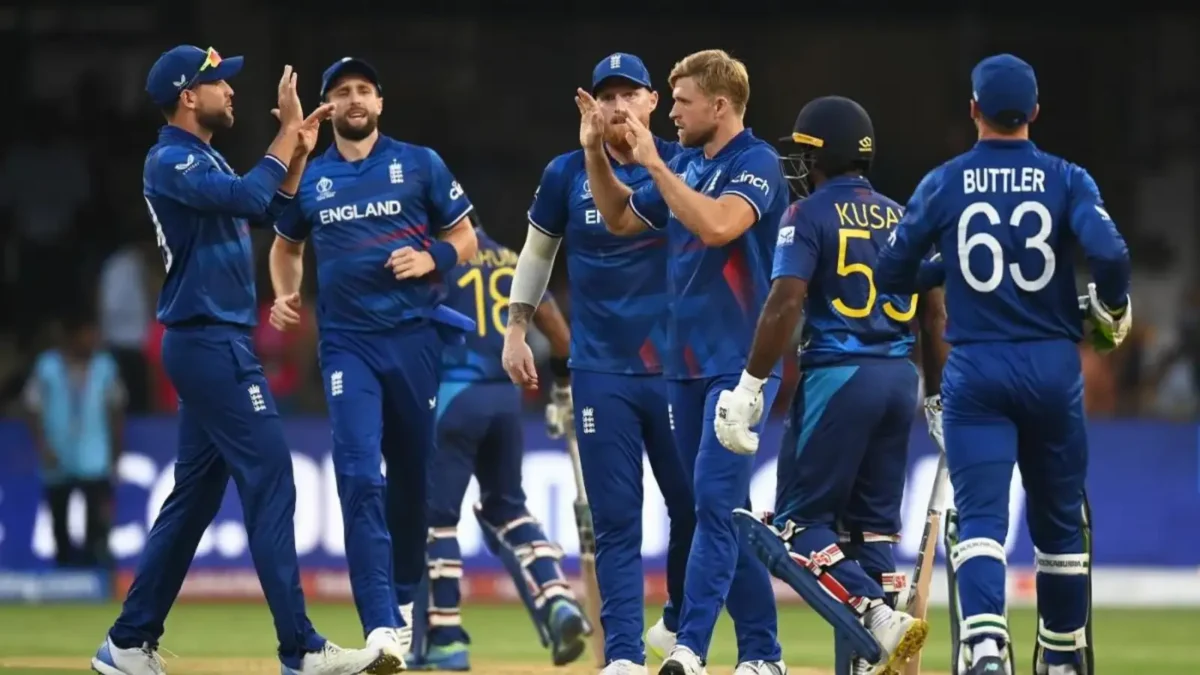
England are halfway through the tournament and are still trying to get their combinations right.

“It would have been nice to [have] a six-month period where you slowly work things through as a group. But that’s just not how it is at the minute, and that’s not how we get to play our cricket as an England player, so you’ve just got to be adaptable.”
It was Joe Root’s statement following their gut-wrenching defeat against South Africa in Mumbai. There is plenty to ponder about this statement, but ‘adaptable’ is the pivotal word here. Modern-day cricket requires adaptability more than ever, but the only facile thing about this word is stating it and maybe writing. Being adaptable in such a fast-moving sport is as arduous as it can get, more so for the English batters who swamp themselves in everything but ODI cricket.
England’s results of the ongoing World Cup might be disturbing but not surprising. Four defeats in five games and the bottom-table position for the defending champions are all England have midway through the tournament. And, if their brand of cricket is anything to go by, things don’t seem to improve.
The most significant reason for this downfall is their inability to adapt to different formats and conditions. When England did a white-ball reset after their 2015 World Cup debacle, they adopted a gung-ho approach, but that aggressive intent was blended nicely with game awareness. They had a method of madness.
Come the World Cup 2023, England can’t boast of having a settled method to play a certain brand of cricket. In fact, there is no method at all. The depth and quality in the squad were never in doubt, and with the talent pool coming through, there won’t be any shortage in near time.
Also Read: World Cup 2023 Semi-finals Qualification Scenarios For All 10 Teams
Liam Livingstone’s dismissal in the opening game would serve as an ideal example. Trent Boult was brought back in the 39th over when he had only three overs left. The right thing should have been to let Boult go without attacking him since he wouldn’t have bowled more than two at that point.
Trent Boult beat him numerous times in the over, but Livingstone went for a big shot after four dot balls and lost his wicket at the crucial time. Joe Root also went for a reverse sweep three overs later, and England’s innings was derailed. These are just a few examples in the batting department.
The conditions have been quite different, and, in fact, the pitches have been grossly unpredictable throughout this World Cup. And England haven’t adapted to the conditions as quickly. It is one of the reasons for their mediocre bowling performance in almost every game.
The English bowlers have the second-worst bowling average (45.10) and the third-worst strike rate (42.03) in the tournament. Their bowlers haven’t used the conditions precisely as the other teams and the results are visible. They could take only one wicket against New Zealand while conceding 399 against South Africa.
Their lengths haven’t been according to the pitch, and even the bowlers like Mark Wood, who has pace, haven’t hit the right areas. Maybe the shift in formats hasn’t helped at all. England played a ton of Test cricket, and the ODI cricket was never their priority after their win in 2019.
They played only ten ODIs before the World Cup – excluding the Ireland series, as no World Cup player, barring Joe Root in the first game, featured in the series – this year. But England only played their full-strength team in the series against New Zealand. They were solely dependent on finding their ideal combination in the warm-up matches.
Only three players – Moeen Ali, Jos Buttler and Adil Rashid – played 25 or more ODIs after the World Cup 2019. Joe Root, for example, played almost three times more Test matches than 50-over cricket in this period. Ben Stokes had to unretire a month before the competition.
Most English players who didn’t play as much Test cricket were plying their trades in the various T20 leagues. No matter how much T20 cricket progresses, the ODIs will never be an extended version of 20-over cricket. It is a different game altogether.
So, when all the players were finally assembled a month before the global event, they were picked based on reputation but not ample game time. Joe Root himself admitted it.
“When you’re not playing the format, it’s hard to know who the best players are,” exclaimed Root.
It was visible right away when New Zealand gave them a hammering in the tournament opener. England never looked prepared to endure 100 overs in a day with white ball. Their batters failed to strike a precise balance between attack and defence, while their bowlers tried too much and sprayed balls all around in search of quick results.
Unfortunately, the English team didn’t learn their lessons quickly, and things were exacerbated when they faced well-prepared units like South Africa and Sri Lanka. It was fitting that both opponents played exactly like England were supposed to. The conditions were contrasting in both games, but England didn’t shuffle their plans and lost badly.
Another issue is the trust in the players, and the constant chop and change haven’t helped the defending champions, either. For instance, they made three changes for the South Africa game, but after losing by 229 runs, England again made as many changes for the Sri Lanka match. Only one of them was forced, as Reece Topley was ruled out of the tournament.
England are halfway through the tournament and are still trying to get their combinations right. It’s not that the players are incompetent. Most players from the team were instrumental in their winning campaign in 2019.
There is no shortage of quality, and neither are they a bad team. Many players are capable of winning the games singlehandedly on their day. It’s just that the English players haven’t adapted themselves into the ODI mould due to the mentioned reasons.
The next set of English players is ready to take over, and another reset after this debacle is inevitable. They don’t need to change the style of play; the current one is tried and tested. The only thing they need to do better than the current lot is more ODI games and the ability to adapt to different conditions as early as possible.
For more updates, follow CricXtasy on Facebook, Instagram, Twitter, and YouTube.